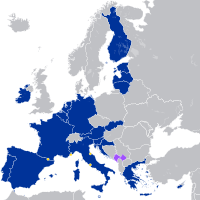
Photo from wikipedia
BACKGROUND Childhood maltreatment (CM) exerts long-lasting psychological and biological alterations in affected individuals and might also affect the endocannabinoid (eCB) system which modulates inflammation and the endocrine stress response. Here,… Click to show full abstract
BACKGROUND Childhood maltreatment (CM) exerts long-lasting psychological and biological alterations in affected individuals and might also affect the endocannabinoid (eCB) system which modulates inflammation and the endocrine stress response. Here, we investigated the eCB system of women with and without CM and their infants using hair samples representing eCB levels accumulated during the last trimester of pregnancy and 10-12 months postpartum. METHODS CM exposure was assessed with the Childhood Trauma Questionnaire. At both timepoints, 3 cm hair strands were collected from mothers and children (N = 170 resp. 150) to measure anandamide (AEA), 2/1-arachidonoylglycerol (2-AG/1-AG), stearoylethanolamide (SEA), oleoylethanolamide (OEA), and palmitoylethanolamide (PEA). RESULTS Maternal hair levels of 2-AG/1-AG increased and SEA levels decreased from late pregnancy to one year postpartum. Maternal CM was associated with lower SEA levels in late pregnancy, but not one year later. In the children's hair, levels of 2-AG/1-AG increased while levels of SEA, OEA, and PEA decreased from late pregnancy to one year later. Maternal CM was not consistently associated with the eCB levels measured in children's hair. CONCLUSIONS We provide first evidence for longitudinal change in the eCB system of mothers and infants from pregnancy to one year later. While maternal CM influenced the maternal eCB system, we found no consistent intergenerational effects on early regulation of the eCB system in children. Longitudinal research on the importance of the eCB system for the course and immunoregulation of pregnancy as well as for the children's development.
Journal Title: Psychological medicine
Year Published: 2023
Link to full text (if available)
Share on Social Media: Sign Up to like & get
recommendations!